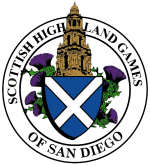History of the Founding of Scotland
The birth of Scotland is believed to be in the Palaeolithic Era – or Stone Age in 10,000 BC. Here is where the first Scots hunted and gathered for fish, wild animals and began to farm the land in the most basic forms.
In the Neolithic age, around 3,000 BC, prehistoric tools have been found from farmers and hunters who established “clans” (though that term would not be used for many more years) who build permanent homes. You can still find the remains of these dwellings at the Heart of Neolithic Orkney World Heritage Site.
It would be thousands of years of forgotten years later till Scotland would reappear on the history books. 124 AD the Roman Empire arrived on these shores and held a strong position for years by the use of the Hadrian’s Wall. However, the Romans never conquered Caledonia. Eventually the Romans retreated out of Britain and the country was left “unoccupied” for almost 700 years. Then the arrival of the Vikings in 800 AD, the Vikings began to migrate from Norway and Denmark and settled in Scotland.
Scotland became a medieval society during the 12th century the Kingdom of Alba continued to grow and grow, the Treated of Falaise, which was signed by William I brought in a time of peace to Scotland. The land was being heavily developed for agriculture, monasteries were being built around the country and the entire country was beginning to develop and thrive.
In 1297 the fight for independence took a new form. The Battle of Stirling Bridge. The uneasiness of the country after the death of Alexander III, England’s monarch, Edward I believe he should be the overload of Scotland and his troops began to torture and kill their way through Scotland. And Edward’s army planned to forward their attacks across the river Forth at Stirling Bridge. Learning this, the Scots pushed the advancing attacks and forced the English attacks back. Enter into history the historical figure of William Wallace.
Over the next 300 years Scottish history would see, Robert the Bruce crowned King of Scotland, The Declaration of Arbroath was written, Union of the Crowns, Renaissance in Scotland, Mary Queen of Scots, The Union of the Crowns.
The Battle of Culloden in 1746 was the final Jacobite rising and the entire last battle fought on British land. The Jacobites however, were no match for the Hanoverian army – the battle lasted just an hour and the army was crushed. Then the Highlander Clearance, shortly after the defeat of the Jacobites at Culloden, a period was known as the Highland Clearances began. Several laws were introduced in an attempt to assimilate the Highlanders; speaking Gaelic and wearing traditional tartan attire was banned, and clan chiefs had their rights to jurisdiction removed.
We just back into history in 1750, “The Age of Enlightenment”, philosophers living in Scotland during this time where the brains behind the modern world. The movement began by the seeking higher understanding, philosophy, chemistry geology engineering, technology, poetry, medicine, economics and history. This is when Scotland saw historical figures like Thomas Hobbes, David Hume, Adam smith, Robert Burns and Sir Walter Scott.
